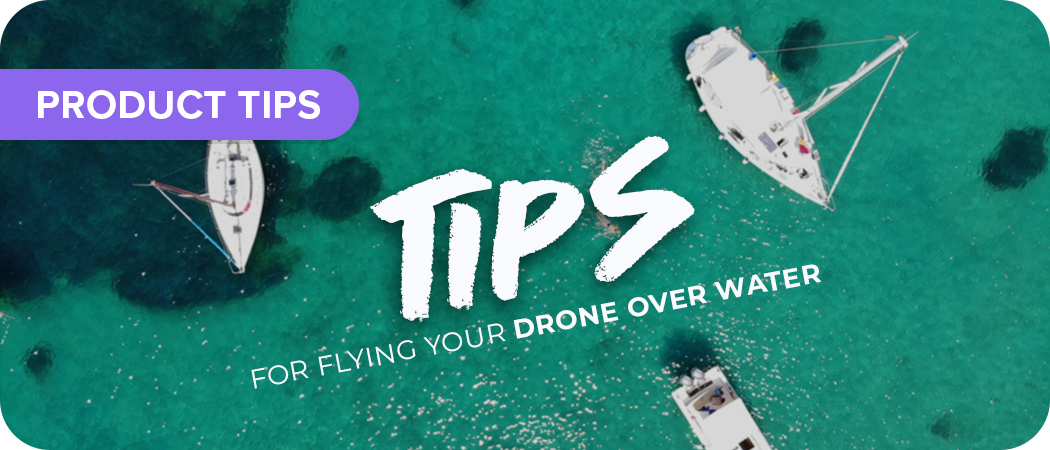Many people who own a drone will understand the beauty of being able to fly over various environments to capture aerial footage. But while there is always so much to see and explore from a new perspective, pilots need to remember that flying over land and water are not the same. Here we’ll look at some tips and precautions to take note of when flying over water.
Owning a drone is awesome. It serves so many purposes from being able to capture stunning aerial imagery in your own time to being able to conduct workplace related inspections for larger organisations. Regardless of what you use drones for occasionally you’ll find yourself needing to operate over water. Although this might seem thrilling, operation over water comes with its own distinct challenges.
Pre-check Airspace
You may think flying over the ocean means you have complete freedom with where you fly your drone, but remember that as a pilot you are responsible for pre-checking the airspace you fly in to make sure you don’t unexpectedly enter a no-fly zone.
General flying laws such as always having sight of your drone and keeping safe and legal distances from other people remain valid even while flying over the sea. Check CASA for more relevant rules relating to drone operation.
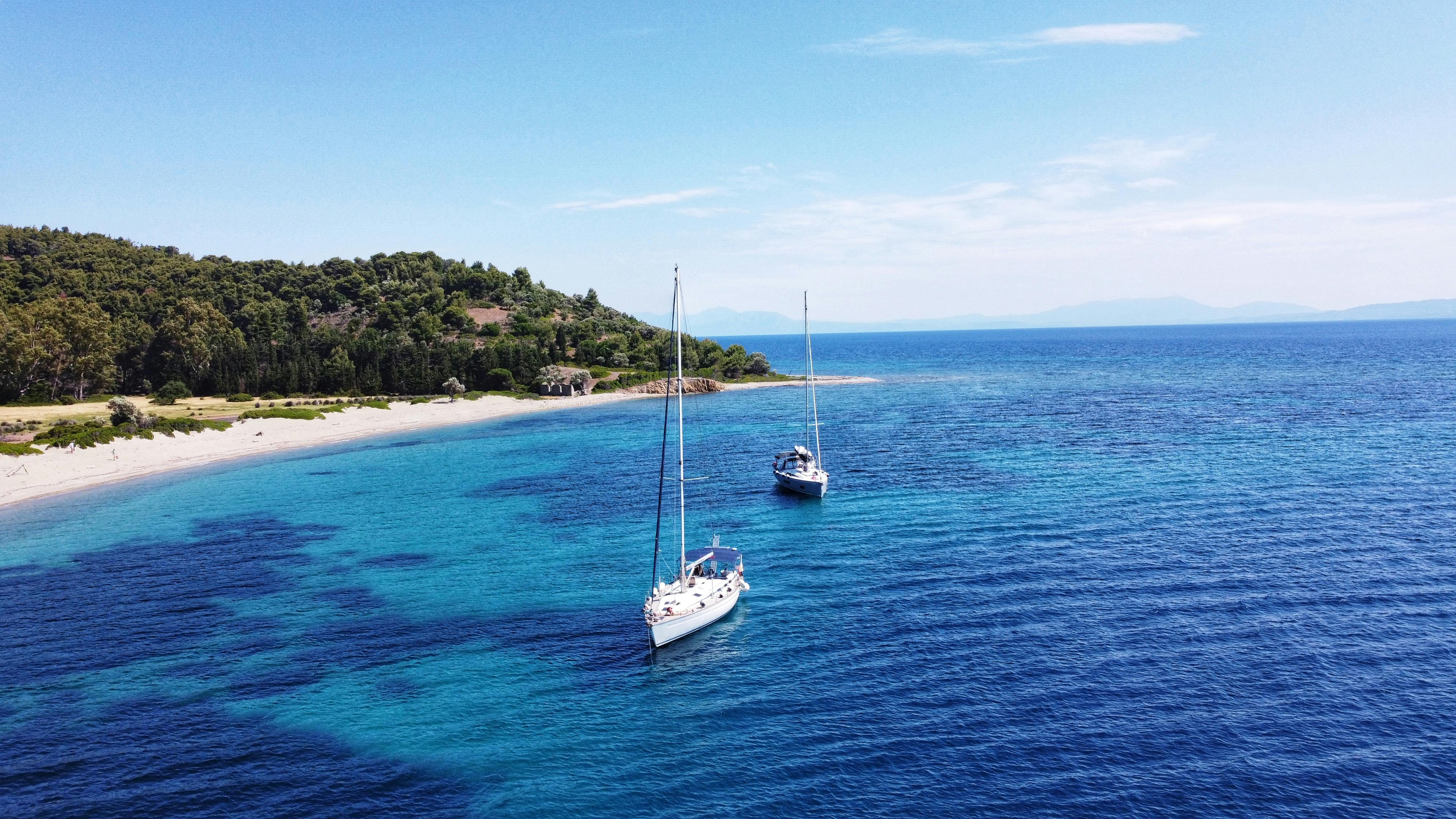
Read More: Best Place To Fly Your Drone In Australia
Calibrate Sensors
Before you take off over the water it is important to calibrate all the sensors on land. This includes the calibration of the compass and the IMU. If you are planning to operate from a boat , the metal build of the boat may interfere with the compass, thus, compass errors can initially be avoided through on land calibration.
IMU calibration is also recommended to be undertaken on land as this requires the aircraft to be perfectly still on a flat and level surface. Generally on a moving boat these conditions are difficult to achieve, therefore you are likely to run into operational errors if not calibrated properly.
It is also good to note that if you are flying from a boat to keep the aircraft a safe distance away from the engine room or the motor of the boat as interference with the compass is possible from the electromagnetic energy emitted from these areas.
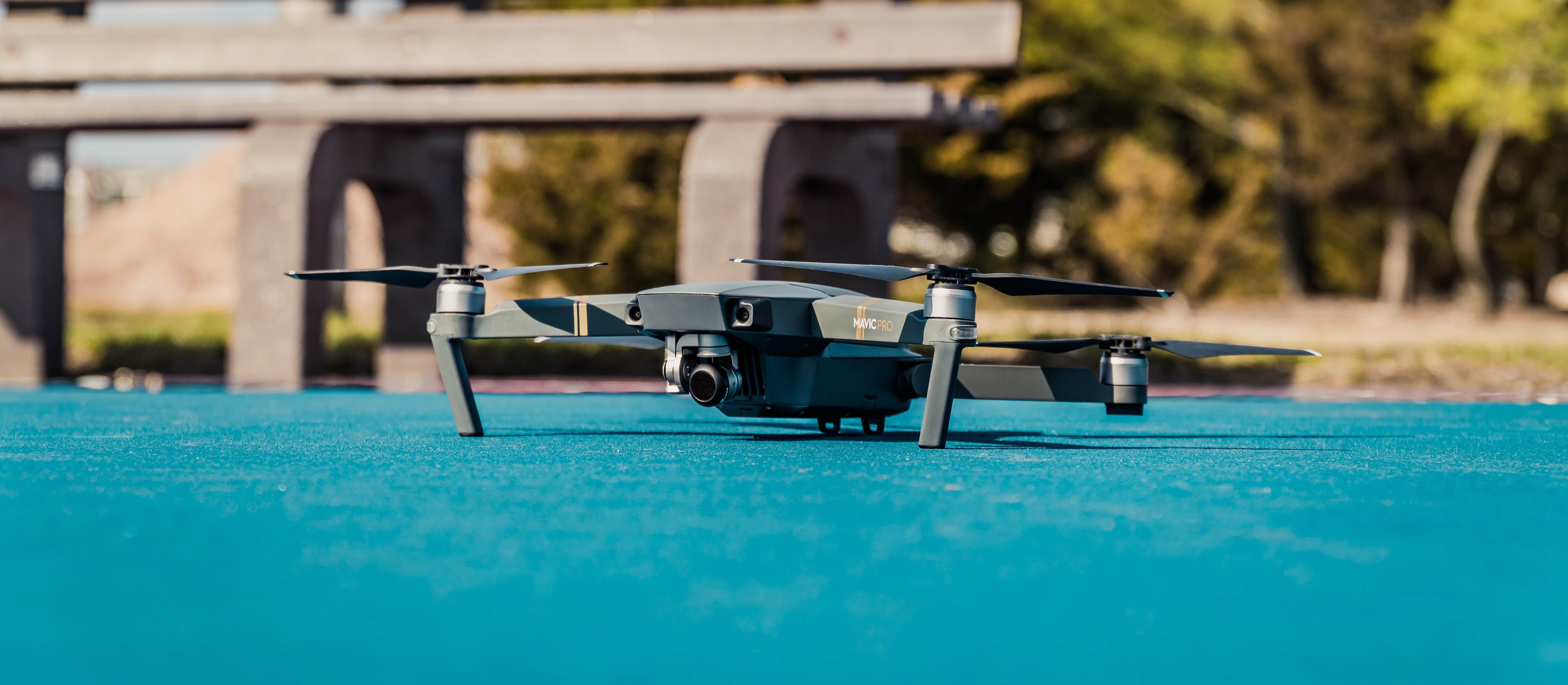
Read More: Tips for Drone Flying at the Beach
Change Advanced Settings
When flying above water there are a few recommended advanced settings to change.
Switch off downward vision positioning system
One of which is the downward vision positioning system (Downwards VPS). Although not necessary to alter this setting some argue the importance of switching this setting off. This is because the Downward VPS maps the surface below the drone to assist with drone positioning. Over water however, the light reflected off the water surface may cause interference with this system resulting in aircraft instability.
While it is best to maintain a height of over two meters above the surface, if flying any lower it is recommended to turn this off. It is also important to remember that if you turn this off the aircraft does not self position requiring you to manually adjust its height frequently to avoid the drone drifting downwards. Consequently precise landing capabilities will be affected so operate with caution.
Set Failsafe to Hover
This setting change is only applicable to pilots operating from boats. If you are on land operating over water this does not apply to you.
Settings are recommended to be turned off for the Return To Home feature for pilots on boats. As the RTH feature records the GNSS coordinates during takeoff to descend back to the same location after RTH activation, enabling RTH whilst your boat has moved from its original location will result in your drone in the water. When disabled, the Failsafe feature hovers instead giving you the chance to navigate to your drone before landing.
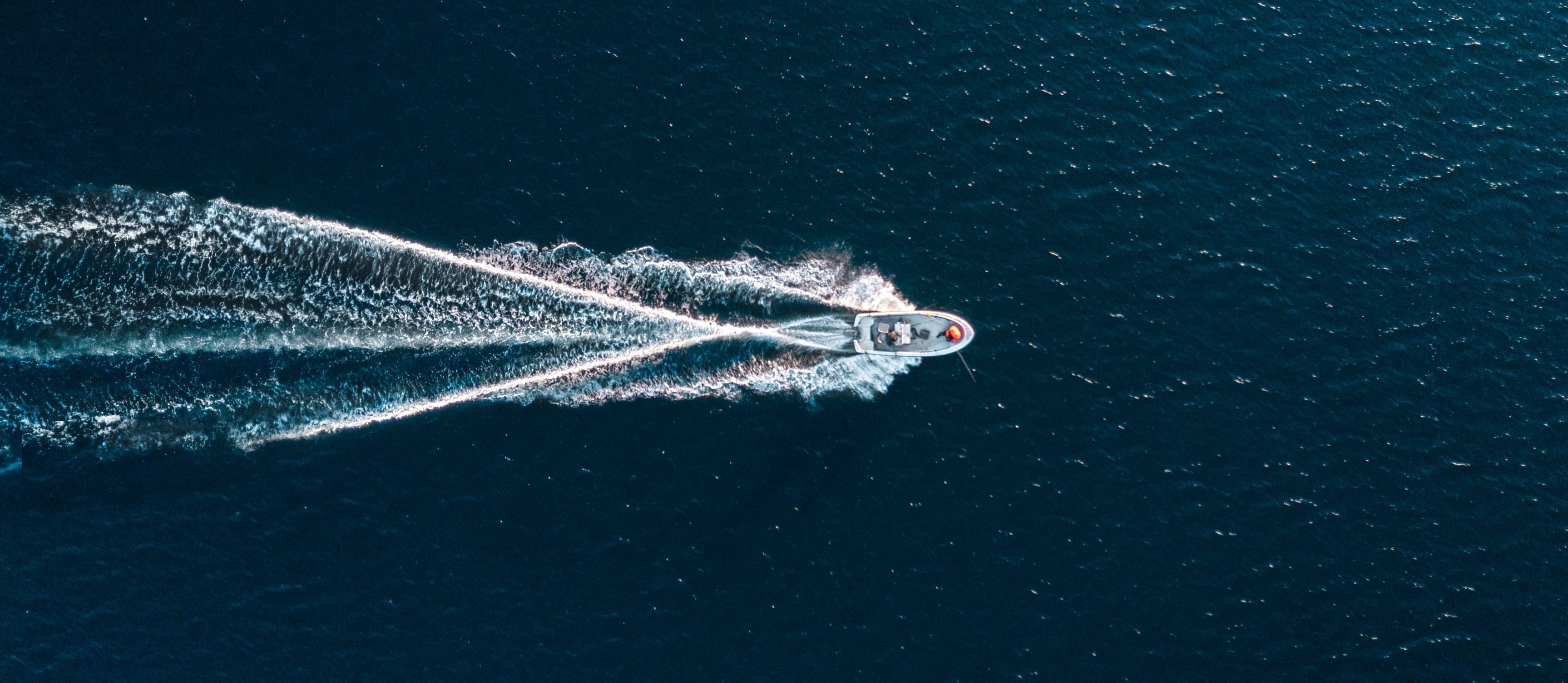
Read More:
The Dos and Don'ts of Drone Flying
Elevate Takeoff and Landing Platforms
Again this applies only to operation on boats. If taking off from a boat that’s built with a high metal content, it is recommended to elevate the take-off and landing platforms to avoid compass errors. Some options to consider for elevation is to use wooden pallets on top of the drones hard cover protective casing or even launch and land by hand. By this we mean launching the aircraft off the palm of your hand and landing into your hand. Although this is not the safest method, it is an option to avoid compass interference.
Rapid Takeoff
When taking off from a boat, it is ideal to immediately fly straight up surpassing the tallest part of the vessel. This is to avoid collisions of any sort.
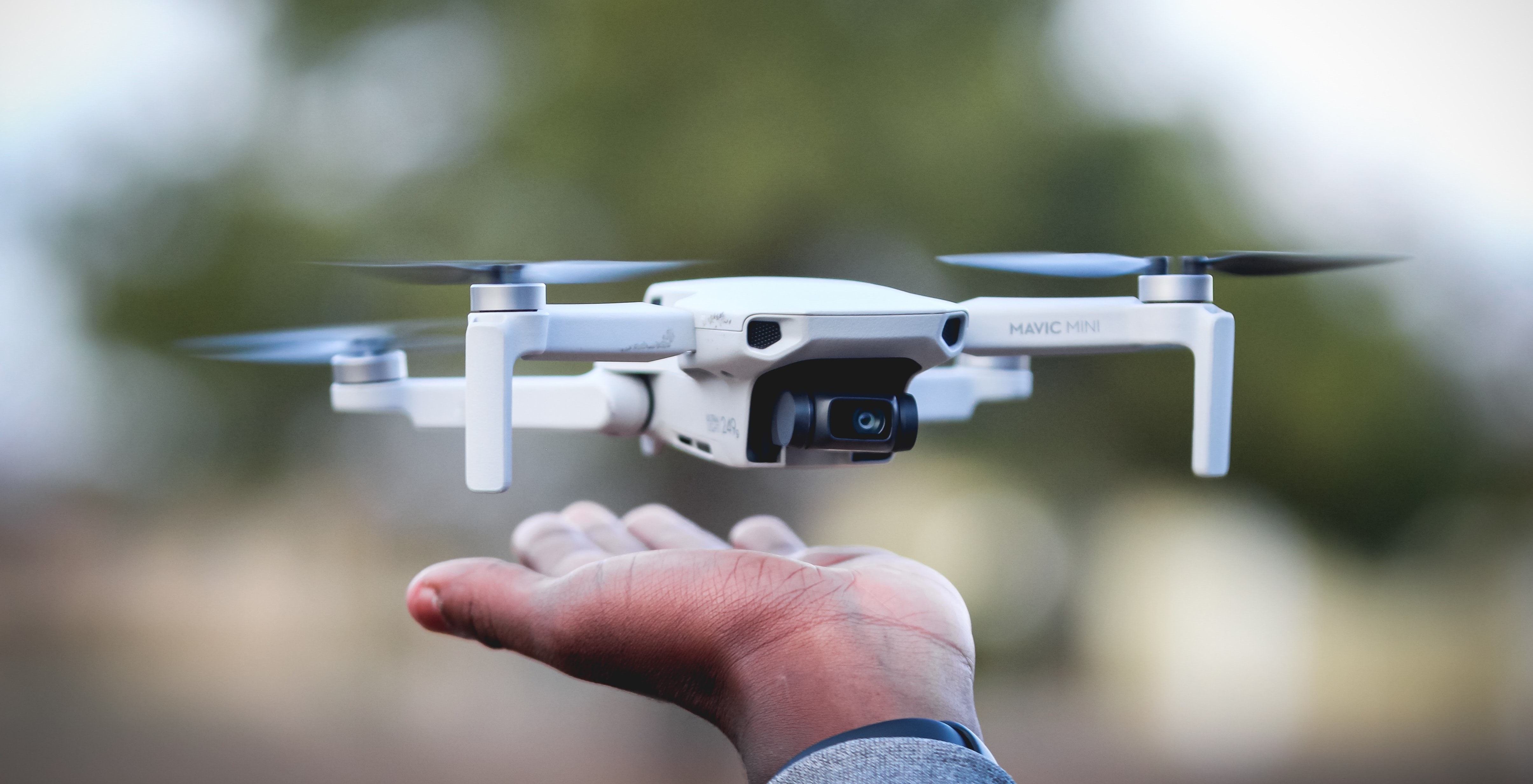
GNSS Awareness
Flying over water can potentially disrupt GNSS leading to multipathing and positional inaccuracies. Although this can not be helped it is important the pilot pays attention to the telemetry data throughout the flight and is fully capable of operating Attitude mode or non-GNSS assisted flight mode if necessary.
Read More: Drones Pre and Post Flight Checklist
Environmental Awareness
Whether you're flying at the beach or out at sea, water operation can bring an increased risk of bird swooping. To be prepared, it is recommended to keep safe distances from any birds or colonies, have vision of where your drone is and be ready at any moment to make swift avoidances.

Post Flight Maintenance
After taking your drone over water, it is particularly vital to remove any water residue that may have gone on the aircraft. This can be done by aerating the drone or letting it sit in silicone packs to absorb out the water.
If you are a pilot who loves to be out on the water, we hope this article has brought some insight on how to safely operate your drone against the challenges you might face.
Where Can I Buy A Drone?
Pilots, get your drone in-store or online with D1 Store, Australia’s first and only DJI Authorised Retailer. Purchase online and receive free shipping in Australia for all orders over $99!
Shop with D1 Store and experience local support, service and the best prices. We've got convenient locations around Australia where you can see and experience the products first hand.

